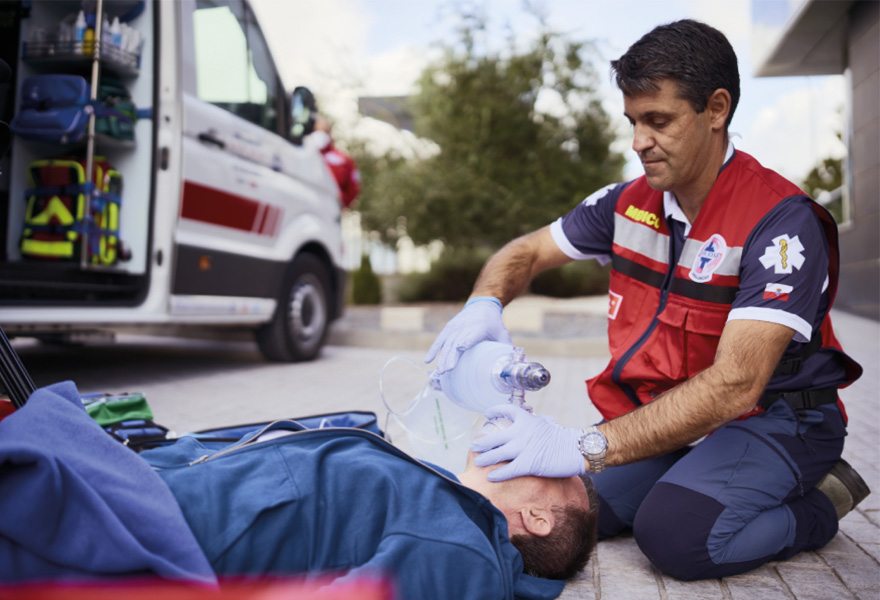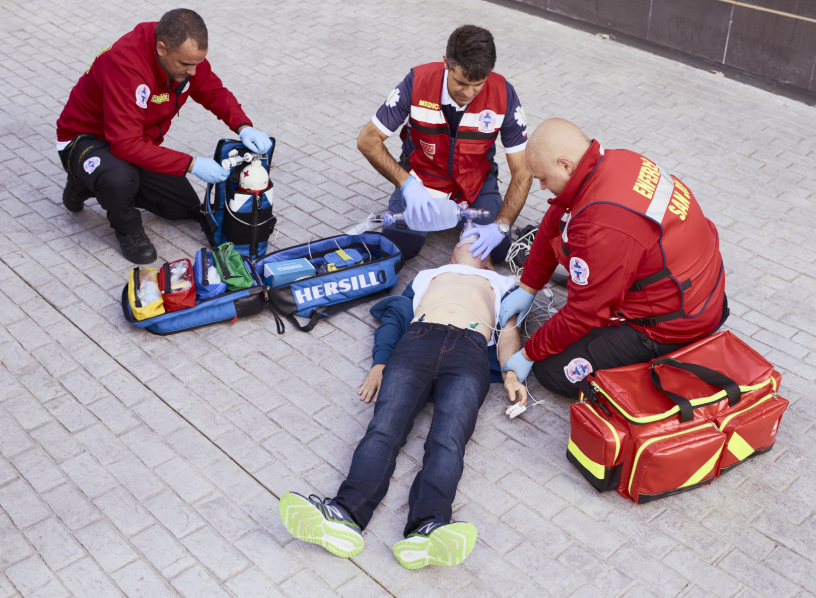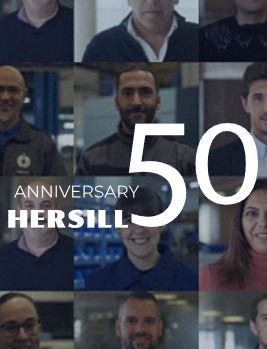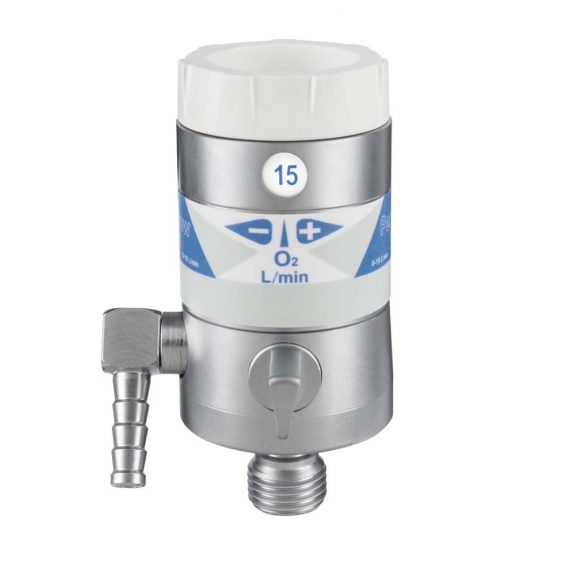HERSILL | NEWS | UPDATES |
Bruno Bonilla is an Emergency Medical Technician in an advanced life support unit of 061 Cantabria and an emergency specialist, an experienced professional in the field of emergencies, whose career has been forged from an early vocation of service. His interest in the sector began in the 1980s, when he started as a volunteer in the Spanish Red Cross, an experience that defined his professional trajectory and led him to specialize in different areas of pre-hospital emergencies, from water rescue to maritime rescue.
With a career marked by continuous learning and handling high-pressure situations, Bruno has developed a unique insight into crisis coordination and the importance of technology and constant training to provide the best care in critical situations.
Bruno, what was it that initially attracted you to the field of emergencies and emergencies? Did you always know you wanted to work in this industry? Tell us about your background.
At the end of the 80s I began to collaborate with the Spanish Red Cross that at that time they were the only health resources, that volunteer work marked my future and made me focus my studies in the health branch complementing my training with all areas of pre-hospital emergencies (water rescue, medical transport, rescue Maritime, etc.)
Managing emergency operations can be very demanding. What have been the biggest personal challenges you have faced and how have you overcome them?
Over the years I have encountered emergency situations that mark you, or by the magnitude, or the repercussions, or simply because they cross the protective barrier. You try not to take it home. When it happens, you try to analyse it in the coldest way. Maybe it happened, what you did and what you could have done differently, the goal is always of improvement or of constructive criticism, never of failure because then we could not facing situations where things by definition can’t go right.
In your experience, what skills are essential to handle pressure in contexts of emergency? What’s your background? How have you developed them over the course of your career?
The greatest skill to develop is based on a good training and above all a training that gives you confidence when facing unexpected situations. Working in an emergency team requires certain specific skills.
As an emergency technician, how do you define this job and what techniques do you use to motivate your team?
As you said it’s about a team, that word in our work is fundamental, when attending an emergency what is most surprising seen from the outside is that almost we do not talk, everyone knows their roles and the needs of the partner, which makes the performance flow as if it were a dance.
What have been the most valuable lessons you have learned working as a team at times of crisis?
That in these situations the roles of each one have to be very clear and well defined because when that is not fulfilled and there are more bosses than Indians chaos takes over the situation.
What importance do you attach to being always up to date with industry innovations?
Healthcare and more specifically in the area of emergencies the evolution is brutal. Evidence-based studies, incorporating tools that improve survival and in the very near future, with the help of artificial intelligence. Our work procedures will be modified to bring very high-quality standards, as long as the administrations have the capacity to implement them.
Technology, such as Hersill Vitae 40 transport and emergency ventilator and “CPR mode” option, help healthcare professionals at the time of resuscitation, playing a crucial role in emergency work.
How has this technology transformed the way you approach emergencies?
Grants for CPR are always welcome, because they leave aside subjective quality variables in order to unify performance criteria with better results.
From your point of view, what are the main advantages of the Vitae 40 in emergency situations?
Transport ventilators have evolved over the years, the Vitae 40 is the result of that evolution, both its small size and its great autonomy in addition to its wide range of modes and respiratory therapies allows professionals a much more advanced attention in the management of the airway outside the hospital environment.
Can you share an experience where the Vitae 40 has made a difference in emergency response?
Certainly, during the pandemic. The pandemic highlighted the need for high-performance mechanical ventilation equipment to provide ventilator support in highly compromised situations, this kind of equipment was traditionally very bulky.
The Vitae 40 has been able to reduce that size without losing the functionality of other larger equipment, even taking into account that during the pandemic it had to be modified to be able to manufacture it with other larger components due to the shortage of materials and the pressing need for mechanical ventilators.
What changes or trends do you see that will be important in the future of the emergency sector?
The technology will allow us to arrive sooner, better equipped and with many more resources to stabilize patients in situ moving later to useful hospitals with much more clinical stability.
If you could improve any aspect of the ER with technology or innovation, what would it be and why?
The transmission of real-time information, both of patient parameters, environmental conditions or personalized therapeutic possibilities based on the information obtained.
What skills or competencies do you think will be indispensable for future generations in the emergency sector?
Although it seems a paradox, I think it would be essential or desirable to humanize emergencies, because patients should never be a broken vehicle to which a diagnostic computer is connected, we must seek empathy with patients to be able to treat them in the best way possible.
For those who want to start a career in this sector, what would you recommend?
This work is vocational, it is hard, the misfortunes surround the performances, but when you like your work and do everything possible to improve, relieve or simply accompany the suffering of a patient you have a very fulfilling feeling you and it is also addictive. Those unexpected situations, scenarios that change every day, patients with different pathologies mean you need to be ready for what might happen.
My advice would be, they keep training, investigating, asking themselves why of what they are taught until they understand how the “car” (patient) works and only then will they know the best way to “repair” it (assist). Throughout my professional career since 1989, my interest to learn, understand and improve has made me able to relate with great professionals of recognized prestige, but also with manufacturers, engineers, designers, etc. (like HERSILL), with whom I have been able to share their knowledge and my experiences helping to develop products that are better adapted to the needs of emergencies. I’m still learning every day (2024).
Bruno Bonilla’s career is an example of so many professionals working 24/7 to save lives. A testimony of dedication, resilience and constant evolution in the field of emergencies and emergencies. Over the years, he has been able to face the challenges of his profession, using each experience as an opportunity to learn and improve. Their focus on teamwork, the importance of technology, and the humanization of emergency care highlights their commitment not only to innovation in the sector, but also to the well-being and dignity of every patient. Bruno’s career inspires future generations to embrace this vocation with passion and responsibility.




